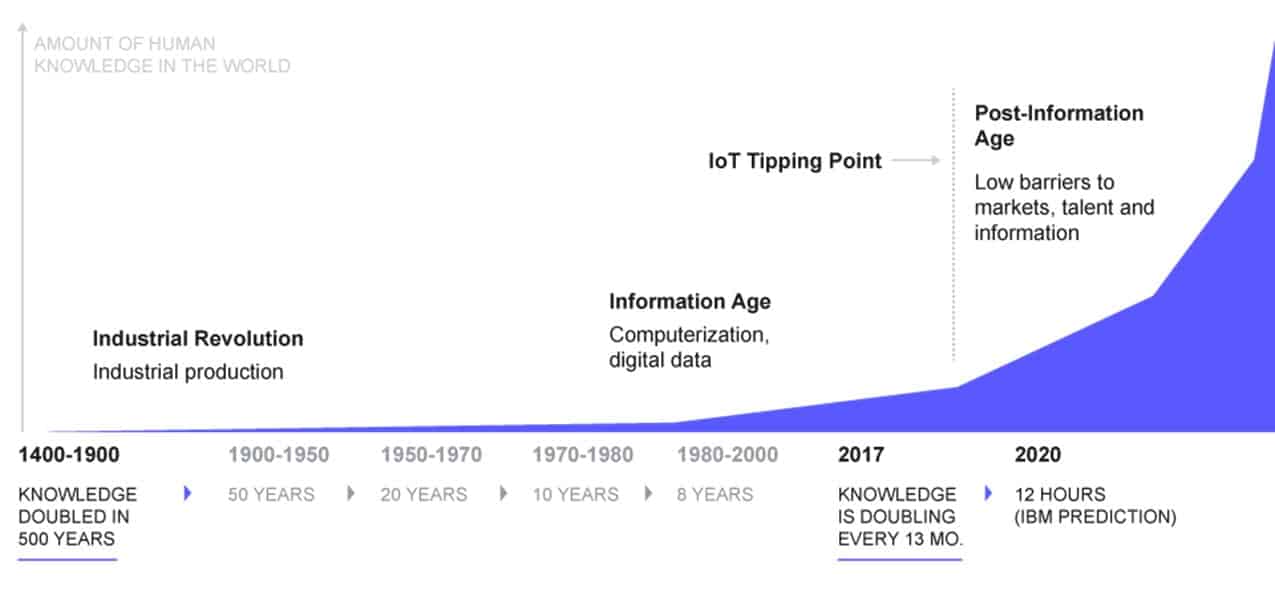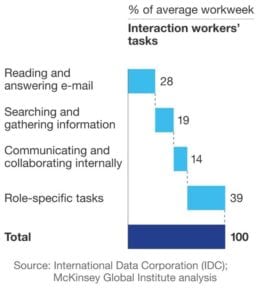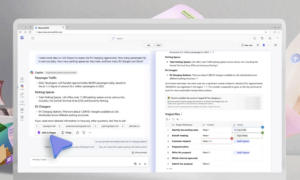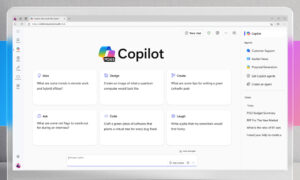Technology has always been about the possibility of efficiency gains. These efficiency gains created the notion that technology would reduce repetitive tasks and allow us to be engaged in more valuable activities. This notion is seeing more traction now through achievements leveraging the power of artificial intelligence to augment work and enhance decisions.
The exponential growth of information – beyond just numerical data – has created as many new challenges as it has resolved. In the year 2017, it was estimated that information was doubling every thirteen months; now, estimates have information doubling every day. This information growth creates the need for systems to analyze and process this data to determine relevance and value. This is no longer a task for traditional data warehouses and data analytics but one for advanced cognitive services and machine learning.

© 2020 www.modernworkplaceliving.com
The analysis of data through text recognition, for example, is one of the time-consuming activities that have long been the target of specialized software solutions. These capabilities have been the purview of the expert combined with an expensive license or additional software investment. Now the move to the cloud with Microsoft’s Office 365 allows the democratization of this highly valuable capability. Further, the introduction of the AI Builder provides an interface for delivering the analysis of unstructured data and the processing of forms to an everyday information worker.
Classification of Unstructured Data
Finding information consumes a large portion of a worker’s time each week. According to a McKinsey report, employees spend 1.8 hours every day searching and gathering information. On average, that’s 9.3 hours per week. But we are talking about more than just enterprise search here (a topic for another Insight); we are looking to provide contextual analysis to the information.
Utilizing the new tooling only available in the cloud, like AI Builder, users can begin to classify unstructured data stored in Microsoft Word documents or Adobe PDFs. Dealing with growing datasets is time-consuming and tends to be prone to errors.
Using the Text Classification model provided by the AI Builder, you can categorize text by its meaning. It is necessary to begin by serving at least a hundred sample text records to use the model. These records consist of sample text that represents a specific type of content to begin the training. Then one or many tags are associated with each sample. The AI model determines the appropriate tag for the given text. The more examples provided, the more accurate the outcomes.
Automate and scale your business processes with AI Builder text classification. Use the results as an input for other AI capabilities, like subscription user churn and predictive analysis. Use existing models from AI Builder to learn from your previously labeled text items; enable the classification of other unstructured text data stored in a wide range of data stores; and incorporate them into your business-specific categories.
Imagine a company with tens of thousands of textual reports or contracts or any other massive amount of documentation. Who in the company understands what is available across all that information and can unlock all its value? The answer is no one; it is not humanly possible. With the analysis services available in Microsoft Azure and integration with Office 365, users can not only search for relevant information but also unlock the value of that stored information to increase a company’s competitive advantage in the marketplace.
Data carries valuable information that helps provide better products and services to your customers. With text classification, you can identify unstructured data entries used for things like sentiment analysis or request routing. AI Builder models help free your employees to act on new insights, ultimately fulfilling the promise of technology to deliver efficiency gains.
Unlock the value of your information
Engage with Abel Solutions to help unlock the sentiment and other valuable insights in your company’s unstructured documentation to deliver value to your customers.
This month’s Abel Insight was written by Eric Gregorich, Sr. Solutions Architect and Jason Bell, Chief Technologist.








